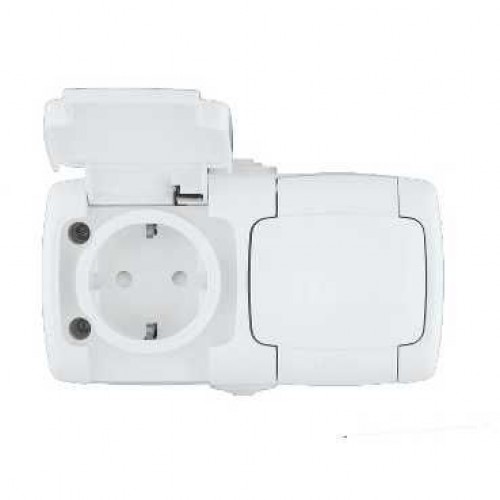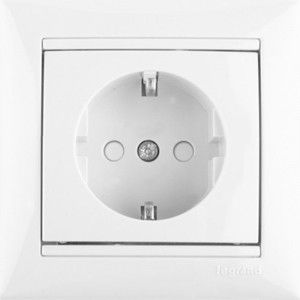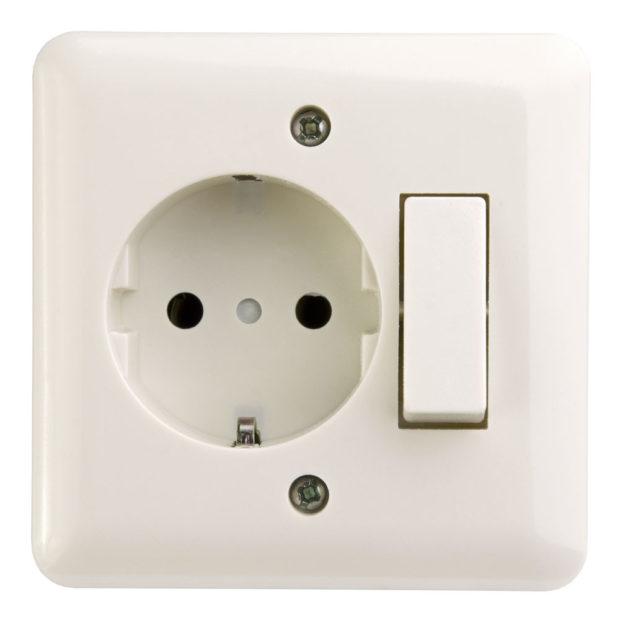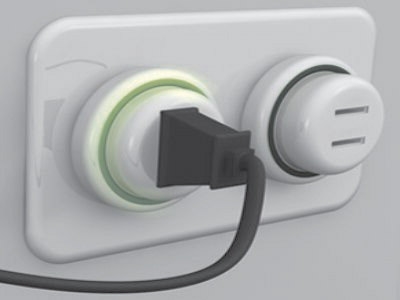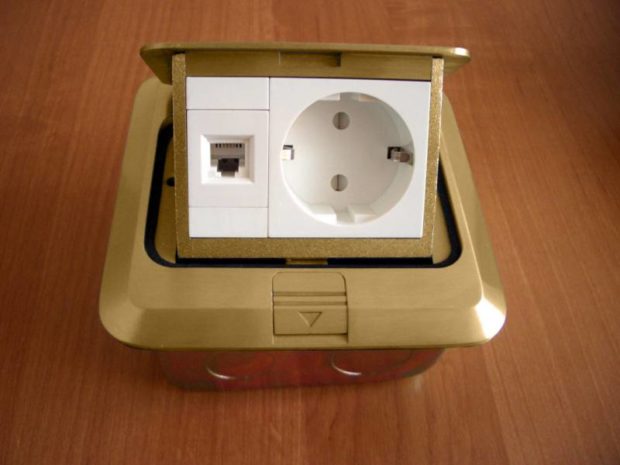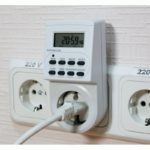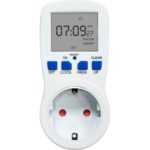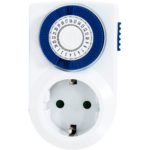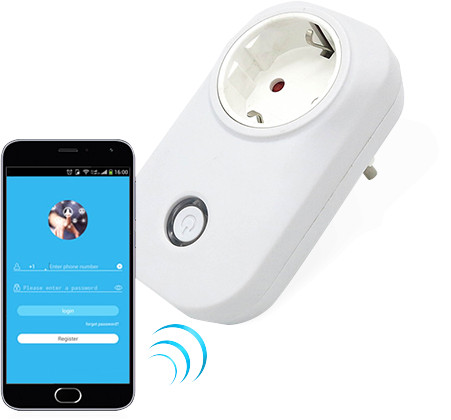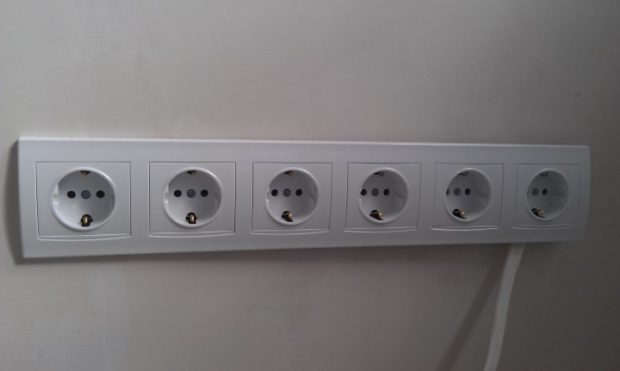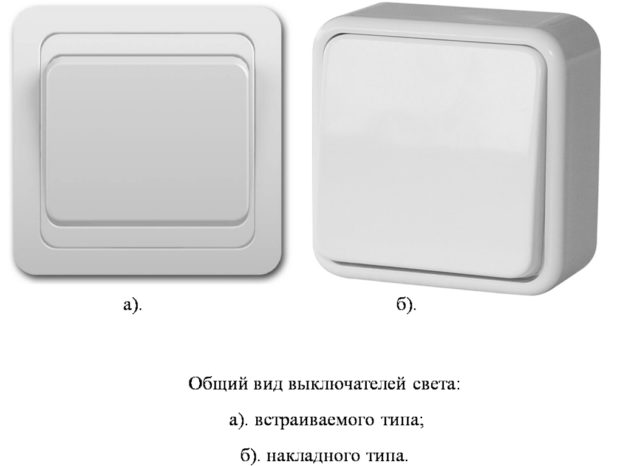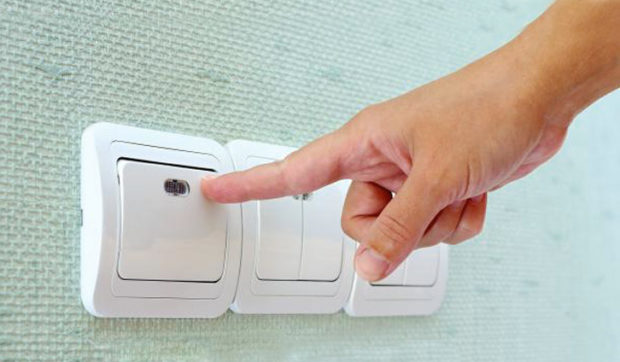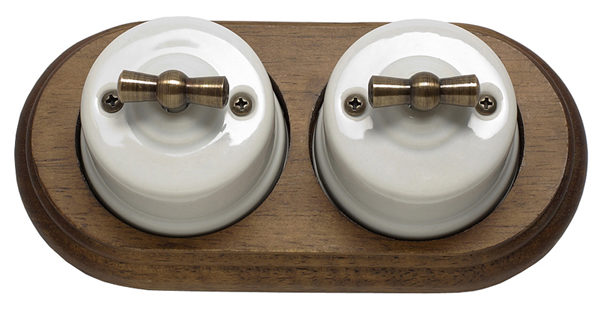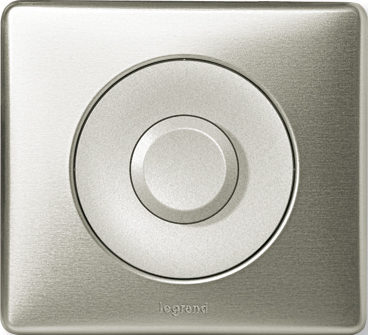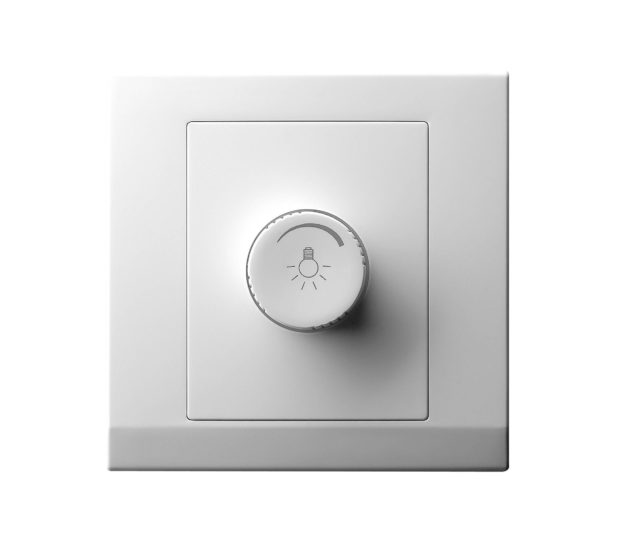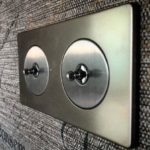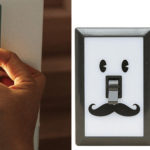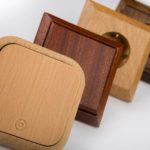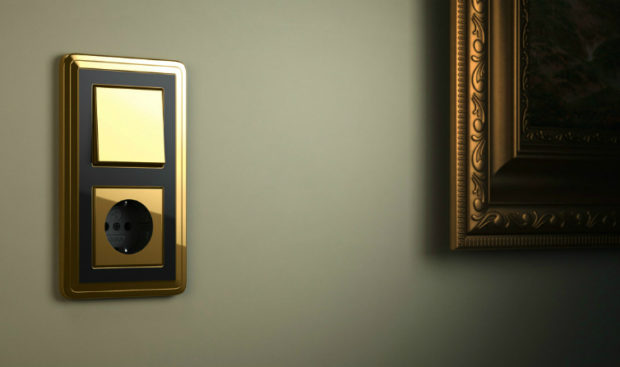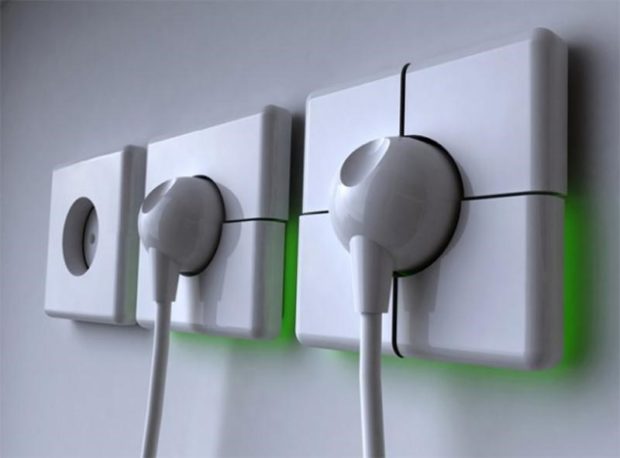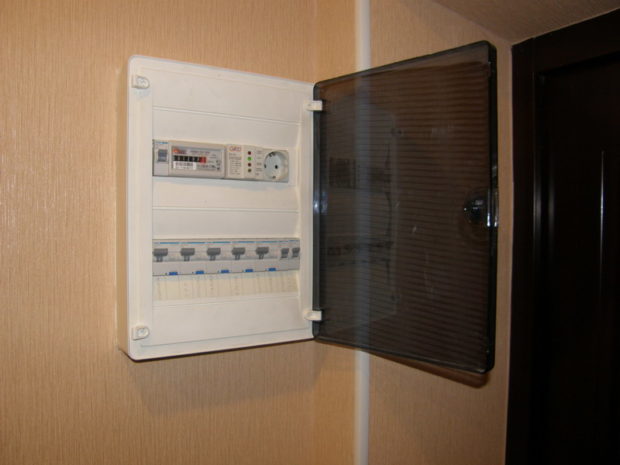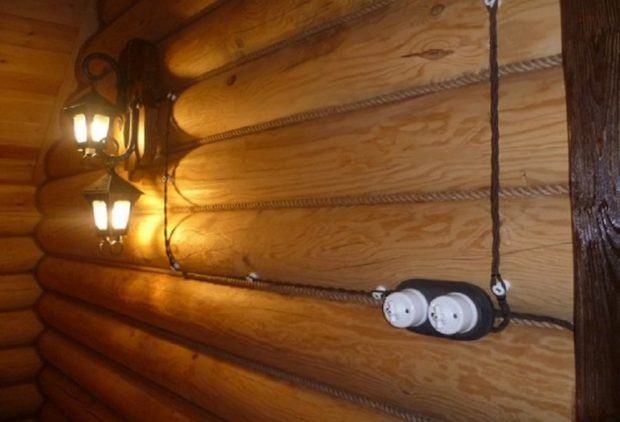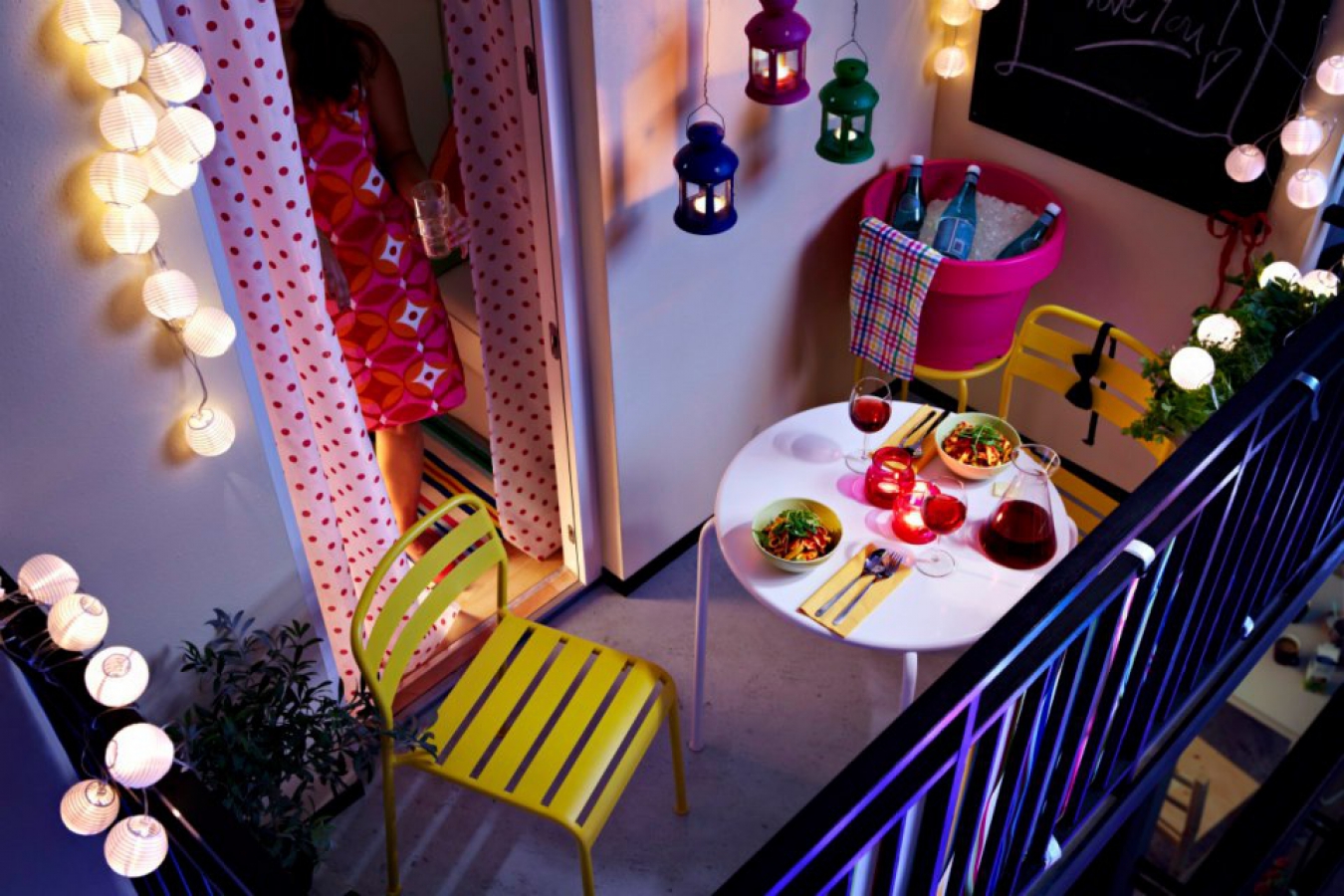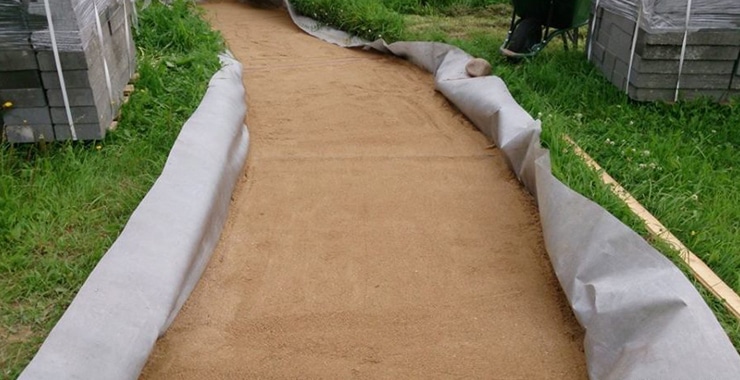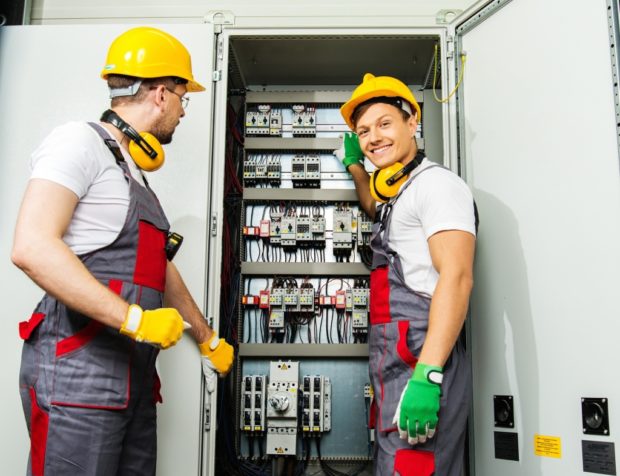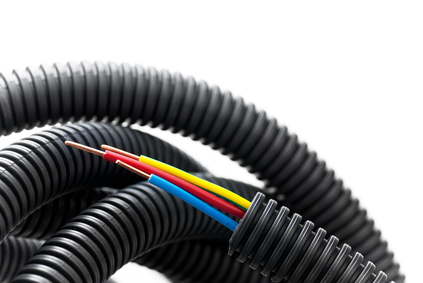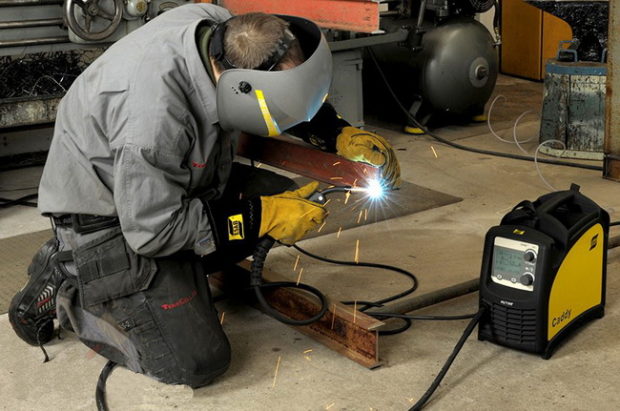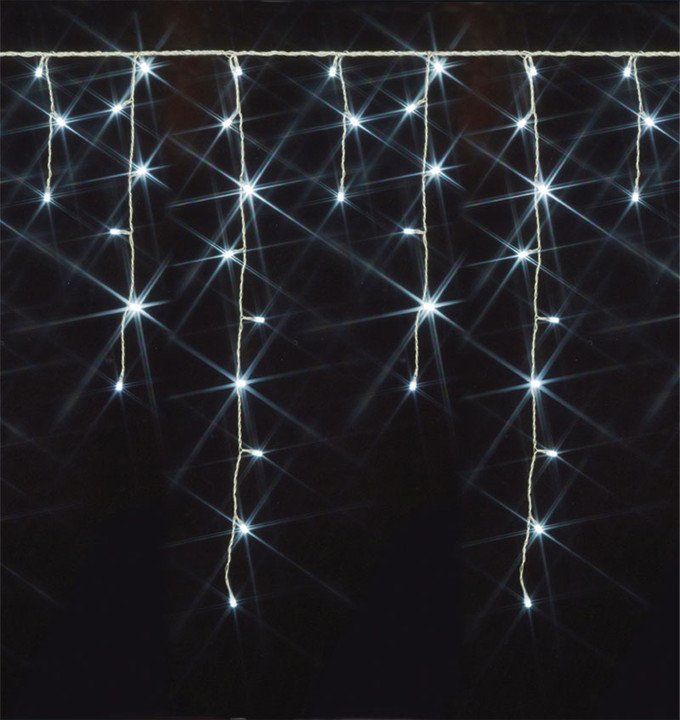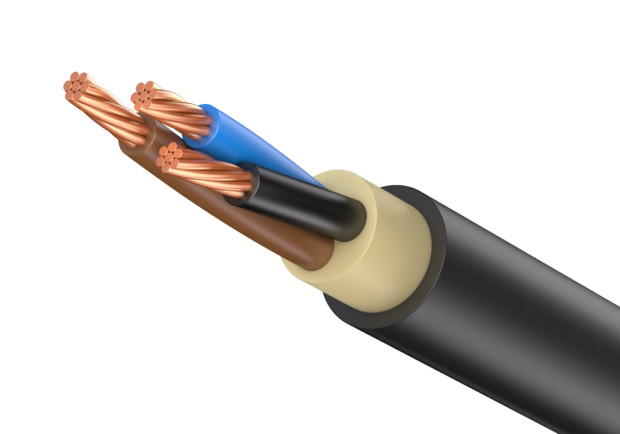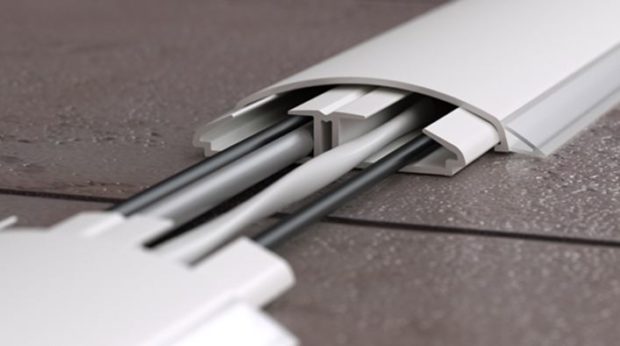7 tips for choosing a power outlet and switch
Every day we use switches and sockets many times, sometimes without even realizing how much the comfort and safety of our lives depend on them. I don’t want to scare anyone, but the wrong choice threatens to ignite the wiring and shock. In the best case, after a while, the plug will begin to fall out of the socket, and the case out of the box. The safety of wiring equipment, which is understood by sockets with switches, is the most important factor of its choice, but today, when designer switches, sockets with a timer and other interesting solutions appear on sale, other parameters are also very important, and making a purchase becomes very difficult . We will try to figure out how to choose the outlet and switch correctly.
No. 1. Type of electrical wiring
The electrical wiring in the apartment can be:
- hidden typewhen the cable is laid in the wall. Without going into features wiring installation, note that this is the most preferable and safest option, but, alas, not always available;
- open typewhen the cable is attached directly to the wall.
For wiring hidden type internal sockets and switches are suitable. The main part of the wiring equipment in this case is located in the wall, and only a pretty case is mounted outside.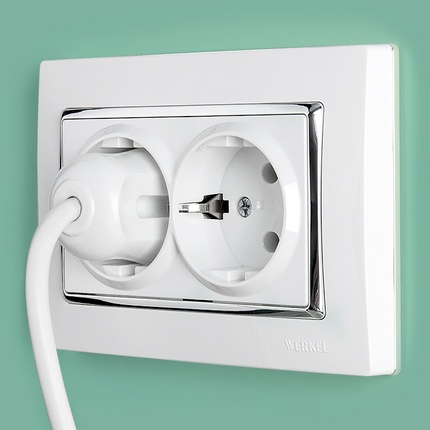
For open postings outdoor equipment is needed, i.e. overhead sockets and switches. They will stick out noticeably, but it’s impossible to say that such details can spoil the interior. True, in this case it will be necessary to more carefully approach the issue of determining the ideal location so that no one touches the socket or switch once again. The advantages include a simpler installation.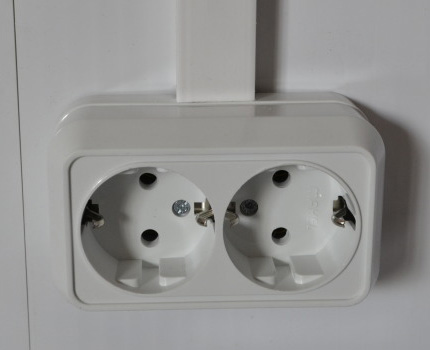
No. 2. Which outlet to choose: degree of protection of the case
Even a child understands that the outlet is a source of increased danger. Adults may add that contact with water can be disastrous. So now, do not use outlets on the kitchen or in the bathroom at all? What then to do in pools and other rooms where contact with water cannot be avoided? Protective sockets have been developed for this case, the housing of which can prevent the negative effects of moisture and dust.
When choosing an outlet, be sure to pay attention to degree of protection against moisture and small objects, which is indicated in the marking with the letters IP and the following two digits.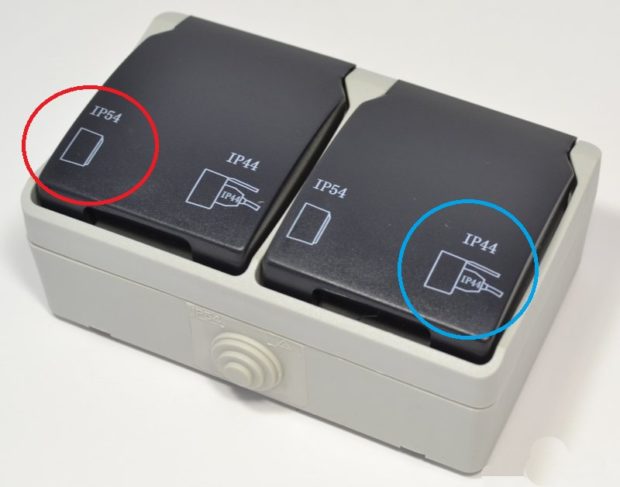
The first digit shows how much the outlet Protected against hit by third-party items:
- 0 - no protection;
- 1 - protection against objects larger than 50 mm;
- 2 - protection against objects over 12 mm;
- 3 - protection against objects over 2.5 mm;
- 4 - sewn from objects larger than 1 mm;
- 5 - protection against small particles, including from dust;
- 6 - absolute dust tightness.
The second digit indicates degree of protection against moisture:
- 0 - no protection;
- 1 - protection against drops falling from above;
- 2 - protection against drops falling not only strictly from above, but also at an angle of 15 degrees;
- 3 - protection against splashes that fall at an angle of 60 degrees, incl. from the rain;
- 4 - protection against splashes that fall at different angles;
- 5 - protection against a stream of water;
- 6 - protection against a powerful jet of water;
- 7 - protection for short immersion in water;
- 8 - protection for prolonged immersion in water.
The choice of outlet depends on where will it be operated, and what impacts on it are supposed. For example, an IP 20 socket is suitable for living rooms, an IP 44 for a bathroom, although some advise taking IP 45, and for the street it is worth looking at an IP 65 socket.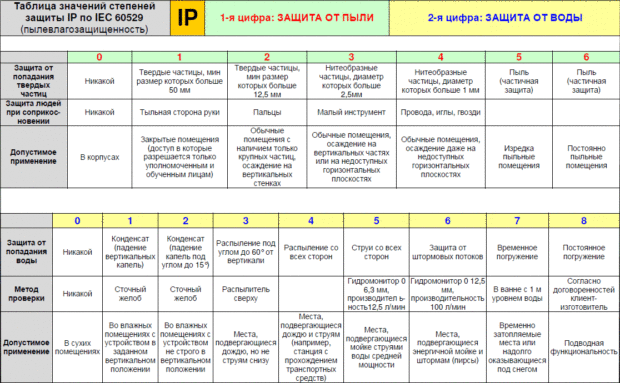
No. 3. Important technical parameters of the outlet
The installation of sockets and switches is better entrust to professionalsif there is even the slightest doubt in one’s own strength. On the other hand, whoever undertakes the installation of such equipment, it is necessary to know the main technical parameters.
Grounding
Sockets can be with grounding and without it. The choice depends on whether there is a grounding conductor in the apartment wiring:
- socket without grounding usually marked 2K, where K is the contact, and the number is the number of contacts. Such outlets are used when grounding is not provided or optional;
- socket without grounding it is marked 2K + 3, outwardly differs by the presence of two metal strips in the socket with contacts. This is an option for homes that use a three-wire network.
It is worth noting that wiring without grounding is becoming less common today, it remained only in old houses.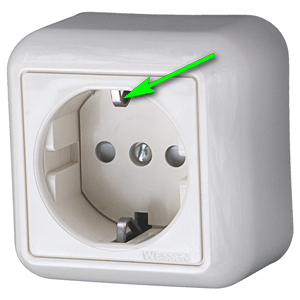
Rated characteristics
The type and strength of voltage, the frequency of the network are the most important parameters when choosing an outlet. Our networks use an alternating voltage of 220 V and a frequency of 50 Hz, in other countries these parameters are slightly different. The rated current is better to choose depending on the planned load on this outlet. For domestic conditions, it is better to take products with a voltage of 250 V and a rated current of 10 A, for connecting a washing machine, an electric stove - 16 A. Experts recommend using a ratio of 4 A - 0.88 kW.
When choosing a power outlet and calculating their total number in the apartment, the number of kilowatts that is allocated for your apartment should be taken into account. If powerful equipment is connected to all outlets at the same time, the cable may overheat, and this may result in a fire. That is why electricians advise to calculate the power of the electrical network before installing new equipment and new outlets. A specialist performs such a calculation - it’s better not to spare money for this.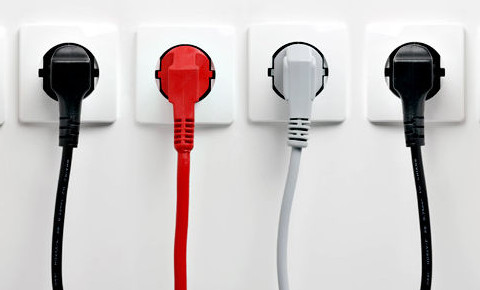
Screw and screwless connection
Without going into the nuances of mounting the outlet, we note that special screws are used to secure the core in the socket. They are screwed into the plate, which clamps the contact. If the contact weakens over time, you can gently tighten the screw.
There are sockets with keyless contacts, i.e. without screws. Instead of the traditional clamp, fixing is carried out here thanks to a special hole, which can narrow and expand when you press a key. Manufacturers of such products promise that regular prevention of such a system is not needed, and the mechanism is able to independently and reliably tighten the contact. In fact, this is not always the case, but to restore contact, you will have to do the procedure much more complicated than just tightening the screw.
In addition, experts advise taking sockets where the plug connectors are equipped with springs - they allow you to more firmly fix the plug. If you plan to connect several outlets with a loop, then there should be an additional pair of contacts, which will simplify the installation process and increase the security of the connection.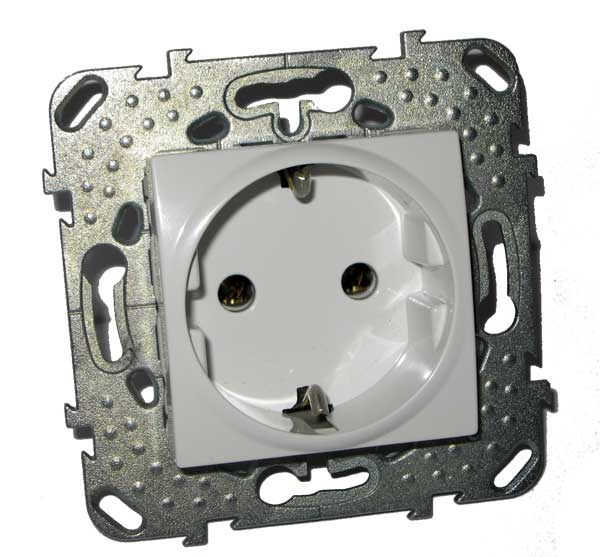
Types of Connectors
In different countries of the world, sockets are used in which the connectors are arranged differently. Accordingly, and electrical appliances have a plug of a certain shape, hence the problem of adapters. We will not go into different options and the geography of their use (this is clearly shown in the picture), but we note that we use sockets of type C (without grounding) and F (with grounding).
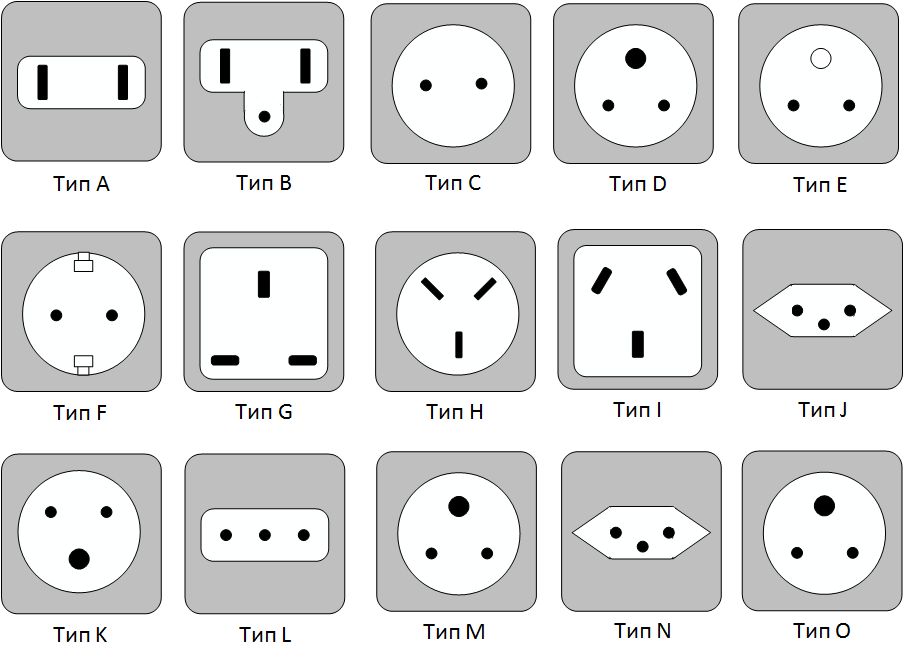
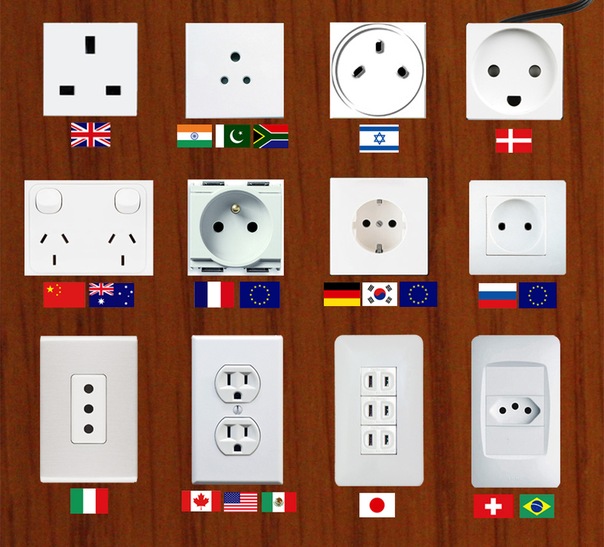
Number 4. Types of Outlets
In our usual understanding, a socket is just an element with holes where you can connect the appliance, and after using it, just unplug the plug from the socket. This is the most traditional option. It is still the most popular, but there are also new, more modern devices that may be slightly larger.
When deciding which outlet to choose, pay attention to these kinds:
- socket with cover indispensable where there is a high probability of moisture or dust getting into the equipment. Such products are placed in bathrooms, pools, on the streets. While the outlet is covered with a lid, it is protected from negative external influences;

- socket with curtain - ideal for children's room and child care facilities. The design provides for the presence of special blocking elements that will not allow you to put a wire or other thin object into the socket. The shutters open only if you insert an electric plug;

- socket with switch, which allows you to turn on and off the power of the appliance, eliminating the need to constantly insert and remove the plug. A similar solution is aimed at extending the life of the outlet;

- plug-in sockets facilitate the process of disconnecting electrical appliances from power, thereby allowing to extend the life of the outlet itself and the power cable. The design assumes the presence of a button on the case, when pressed, the plug literally pops out of the outlet. Something similar is implemented in mixers. It is appropriate to install such sockets in places where they are actively used, for example, in hairdressing salons and in kitchens;

- socket with indicator light suggests the presence of a small light bulb in the design. Its light indicates the presence of electricity in the network and allows you to quickly navigate in the dark;
- floor outlet with a retractable mechanism will be needed when it is impossible to place it in the wall for some reason. By the way, retractable sockets of this type are sometimes mounted on countertops;

- socket with timer. The functionality is understandable, and the shutdown time can be set using the buttons and display, as well as using the rotary mechanism;
- Wi-Fi sockets used in the systemsmart House", You can manage them remotely using a special application;

- outlet block appropriate where the work of several electrical appliances is constantly required, for example, in the kitchen;

- special sockets may be required to connect a telephone, radio point or antenna;
- power connectors are needed mainly at the stage of construction and repair work to connect high-power devices.
Among the more original options are also presented. window socketsthat convert solar energy into electricity, sockets with a power meter (show how much power the connected device consumes) and sockets with USB out.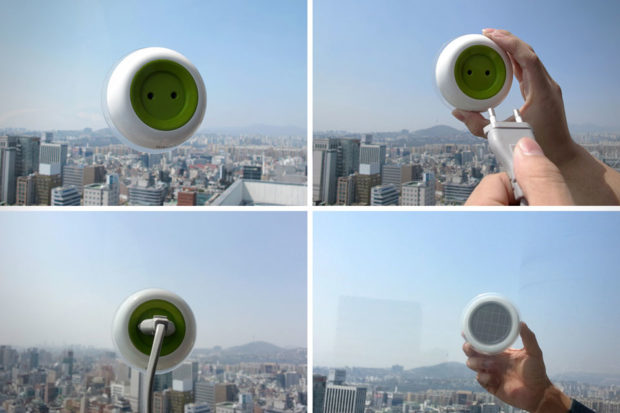
No. 5. Circuit breaker selection
Many options for choosing a socket are also valid for a switch:
- by type of installation switches can be laid on and built-in. The choice for the most part depends on the characteristics of the wiring in the apartment;
- depending on operating conditions, circuit breakers with varying degrees of protection against dust and moisture. For rooms with a consistently high humidity level, it is recommended to choose switches with a plastic or rubber casing;
- specifications circuit breakers will be indicated in its marking and are selected depending on the rated mains voltage, current and power of the devices with which the circuit breakers will work.

By the way fastenings switches can be:
- screw similar to screw sockets. Experts say that such switches are good to use with aluminum wiring, which does not spark and does not heat up;
- screwless are often used with copper wiring.
Depending on the design features breakers are divided into:
- loose-leaf - the most familiar and the easiest option to manage;

- rotary - Such a mechanism is often used in switches made in retro style. To enable it, you must turn the lever clockwise;

- push-button - An option that can be compared with the cross over in convenience, but has not yet found distribution. To turn on the light, just press the button, it is also pressed to turn off;

- dimmers they allow not only to turn on the light, but also to adjust its brightness by turning the lever. This is very economical and convenient when you want to create different lighting scenarios in one room. Dimmers are usually used with incandescent and halogen lamps - find fluorescent or LED lamp, which could connect to a dimmer, is difficult, and it will cost a couple of times more than usual.

Several switches can be installed on one panel, which are responsible for switching on different groups of lamps - this is a common and quite convenient solution today. Moreover, the same fixtures can be controlled from different places in the room - this requires the installation of additional switches. The system is getting complicated, but comfort is growing. Smart Switches with a motion sensor, touch or remote control are installed in smart home systems.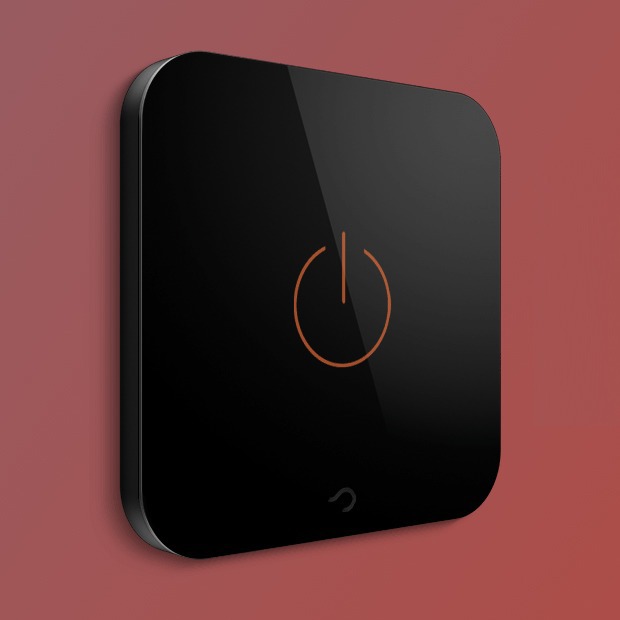
Separately, it is worth highlighting illuminated switches: The built-in small light will tell you that there is electricity and make it easier to search in pitch darkness. Can install at home a timer switch or a switch that will respond to cotton.
No. 6. Design and material
Elements such as sockets and switches, it is not accepted to emphasize in the interior design, so they are always picked up to match the walls. The style of their performance should correspond to the chosen interior style, and there is where to roam. Manufacturers offer us products in the simplest and most familiar way, as well as real works of art.
As manufacturing material usually use shockproof and fireproof plastics. Less common and rather elite options are wood, leather, stone, glass and even concrete, porcelain, clay and textiles. The switches may use steel, bronze, chrome, aluminum and other metals. Despite the fact that no one focuses on sockets and switches, their design is an important touch in creating an integrated harmonious interior.
The more sophisticated and original design the equipment has, the more expensive it will cost, but in the pursuit of aesthetics, do not forget about safety.
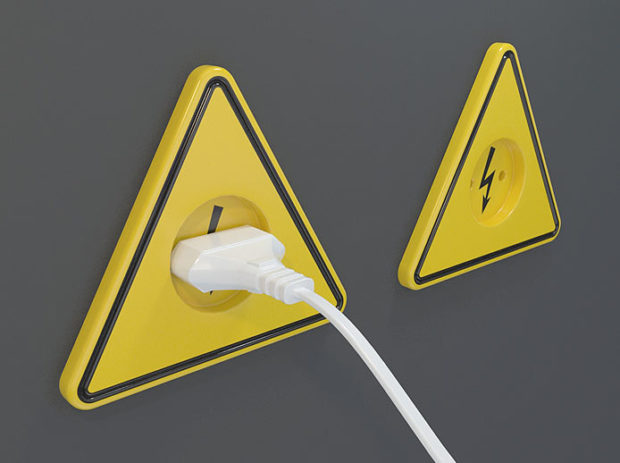
Number 7. What else is important to consider when choosing?
Considering several options in the store, it doesn’t interfere conduct a visual assessment:
- from plastic sockets and switches should not go pungent odor. A pungent aroma is the main sign that the quality of the product, to put it mildly, is not very high;
- externally the product should not have flaws, uneven edges, cracks, pits and other defects. If the material is plastic, then it must be solid - soft plastic is easily deformed, and this can become not just an aesthetic problem, but also a security risk. Weight It also matters: a high-quality switch or socket will be weighty, since all structural elements have thick walls that provide higher mechanical strength and durability;

- the quality of plastic is indirectly indicated amount of elementsof which the switch or socket consists. The more of these elements and fasteners, the better - that means the manufacturer used good material;
- build quality can be identified by grounding contacts. If they are thin and soft, then it is better to refuse such a purchase;
- must be present marking and manufacturer's quality mark. Chinese cheap products are usually not labeled. In addition to the quality mark, information on the rated voltage and current is applied;
- another indirect indicator of quality is availability assembly and installation instructions. It is laid by manufacturers who care about customers, and unscrupulous Chinese companies that stamp inferior sockets and switches often pack them in a plastic bag and that's it.

Among manufacturers sockets and switches we note Legrand (French company, industry leader), Schneider Electric, Jung, Bticino, ABB, Polo, Fontini. There are slightly cheaper products from Polish and Turkish companies, which also has good quality: Viko, Makel, Karlik, MONO, OSPEL. Of the domestic manufacturers, the largest is Wessen.
Finally, we note that the standards regulate the installation of sockets and switches at a height of not more than 1 m from the floor, but there are a lot of exceptions to this rule, especially when it comes to bathrooms and kitchens - it is permissible to mount the equipment in the most convenient place.

